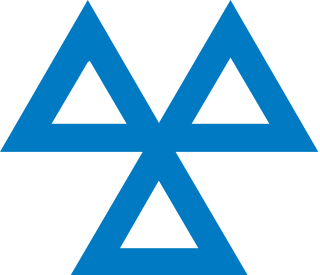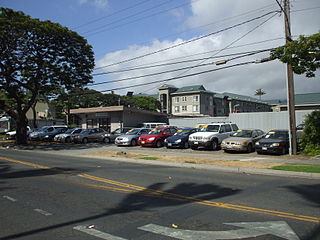Related Research Articles

The Driver and Vehicle Licensing Agency is the organisation of the UK government responsible for maintaining a database of drivers in Great Britain and a database of vehicles for the entire United Kingdom. Its counterpart for drivers in Northern Ireland is the Driver and Vehicle Agency (DVA). The agency issues driving licences, organises collection of vehicle excise duty and sells personalised registrations.

A vehicle registration plate, also known as a number plate, license plate, or licence plate, is a metal or plastic plate attached to a motor vehicle or trailer for official identification purposes. All countries require registration plates for road vehicles such as cars, trucks, and motorcycles. Whether they are required for other vehicles, such as bicycles, boats, or tractors, may vary by jurisdiction. The registration identifier is a numeric or alphanumeric ID that uniquely identifies the vehicle or vehicle owner within the issuing region's vehicle register. In some countries, the identifier is unique within the entire country, while in others it is unique within a state or province. Whether the identifier is associated with a vehicle or a person also varies by issuing agency. There are also electronic license plates.
Vehicle Excise Duty (VED) is an annual tax that is levied as an excise duty and which must be paid for most types of powered vehicles which are to be used on public roads in the United Kingdom. Registered vehicles that are not being used or parked on public roads and which have been taxed since 31 January 1998, must be covered by a Statutory Off Road Notification (SORN) to avoid VED. In 2016, VED generated approximately £6 billion for the Exchequer.

The MOT test is an annual test of vehicle safety, roadworthiness aspects and exhaust emissions required in the United Kingdom for most vehicles over three years old. In Northern Ireland the equivalent requirement applies after four years. The requirement does not apply to vehicles used only on various small islands with no convenient connection "to a road in any part of Great Britain"; no similar exemption is listed at the beginning of 2014 for Northern Ireland, which has a single inhabited island, Rathlin. The MOT test was first introduced in 1960 as a few basic tests of a vehicle and now covers 20 different parts or systems on or in the car.
A vanity plate or personalized plate ; prestige plate, private number plate, cherished plate or personalised registration ; personalised plate or custom plate is a special type of vehicle registration plate on an automobile or other vehicle. The owner of the vehicle pays extra money to have their own choice of numbers or letters, usually portraying a recognizable phrase, slogan, or abbreviation, on their plate. Sales of vanity plates are often a significant source of revenue for North American provincial and state licensing agencies. In some jurisdictions, such as British Columbia, vanity plates have a different color scheme and design.
Road tax, known by various names around the world, is a tax which has to be paid on, or included with, a motorised vehicle to use it on a public road.
The Vehicle Identity Check (VIC) was one regulation concerning car ownership in the United Kingdom, which was in force between April 2003 and October 2015.
The Vehicle register in the United Kingdom is a database of motor vehicles. It is a legal requirement in the UK for most types of motor vehicle to be registered if they are to be used on the public road.

A used car, a pre-owned vehicle, or a secondhand car, is a vehicle that has previously had one or more retail owners. Used cars are sold through a variety of outlets, including franchise and independent car dealers, rental car companies, buy here pay here dealerships, leasing offices, auctions, and private party sales. Some car retailers offer "no-haggle prices," "certified" used cars, and extended service plans or warranties.
The Driver and Vehicle Agency is a government agency of the Northern Ireland Department for Infrastructure. The agency is responsible for setting and enforcing standards for drivers and vehicles, registering drivers, and the issuing of licences.
The Retail Motor Industry Federation (RMI) represents the interests of motor industry operators in England, Wales, Northern Ireland and the Isle of Man providing sales and services to motorists and businesses. It does not represent businesses in Scotland, which are represented by the independent Scottish Motor Trade Association.

In the United Kingdom, a driving licence is the official document which authorises its holder to operate motor vehicles on highways and other public roads. It is administered in England, Scotland and Wales by the Driver and Vehicle Licensing Agency (DVLA) and in Northern Ireland by the Driver & Vehicle Agency (DVA). A driving licence is required in England, Scotland, and Wales for any person driving a vehicle on any highway or other "road", as defined in s.192 Road Traffic Act 1988, irrespective of the ownership of the land over which the road passes. Similar requirements apply in Northern Ireland under the Road Traffic Order 1981.

A vehicle registration certificate is an official document providing proof of registration of a vehicle. It is used primarily by governments as a means of ensuring that all road vehicles are on the national vehicle register, but is also used as a form of law enforcement and to facilitate change of ownership when buying and selling a vehicle.
Vehicle registration plates in Northern Ireland use a modified version of the British national registration plate system that was initiated for the whole of the United Kingdom of Great Britain and Ireland in 1903. Originally, all counties in the UK were allocated two identification letters. At that time, the whole of Ireland was in the UK, and the letters I and Z were reserved for the Irish counties. The 'I' series was used first, but by the time it came to using the 'Z' series in 1926, the Irish Free State had already come into existence, and so it was agreed that the Northern Ireland would use the AZ – YZ series, while the Free State would use the ZA – ZZ series. In 1987, the Republic of Ireland broke away from the system altogether. As of 2002 there were reportedly 794,477 recorded registration plates in Northern Ireland, compared to only 50 for the island as a whole when the format was first introduced in 1903.
In Canada, registration plates are issued by an agency of the provincial or territorial government.

Driver and Vehicle Licensing Authority (DVLA) of Ghana is the government agency responsible for the licensing and evaluation of drivers and cars in Ghana.
Vehicle registration plates are the alphanumeric plates used to display the registration mark of a vehicle, and have existed in the United Kingdom since 1904. It is compulsory for motor vehicles used on public roads to display vehicle registration plates, with the exception of vehicles of the reigning monarch used on official business.

Vehicle registration plates of Ghana indicate the region where the vehicles bearing them were registered. Ghana has no restrictions on the use of number plates in the various regions, for example, a vehicle registered in the Ashanti Region can be used in the Brong-Ahafo Region.

Driving licence in Turkey is a document issued by the relevant government agency, regional or local security force, confirming the holder is qualified to drive motor vehicles. Driving licence exams are regulated by the Ministry of National Education while the licence is issued by the General Directorate of Security.
References
- Vehicle Registration UK Government - DVLA